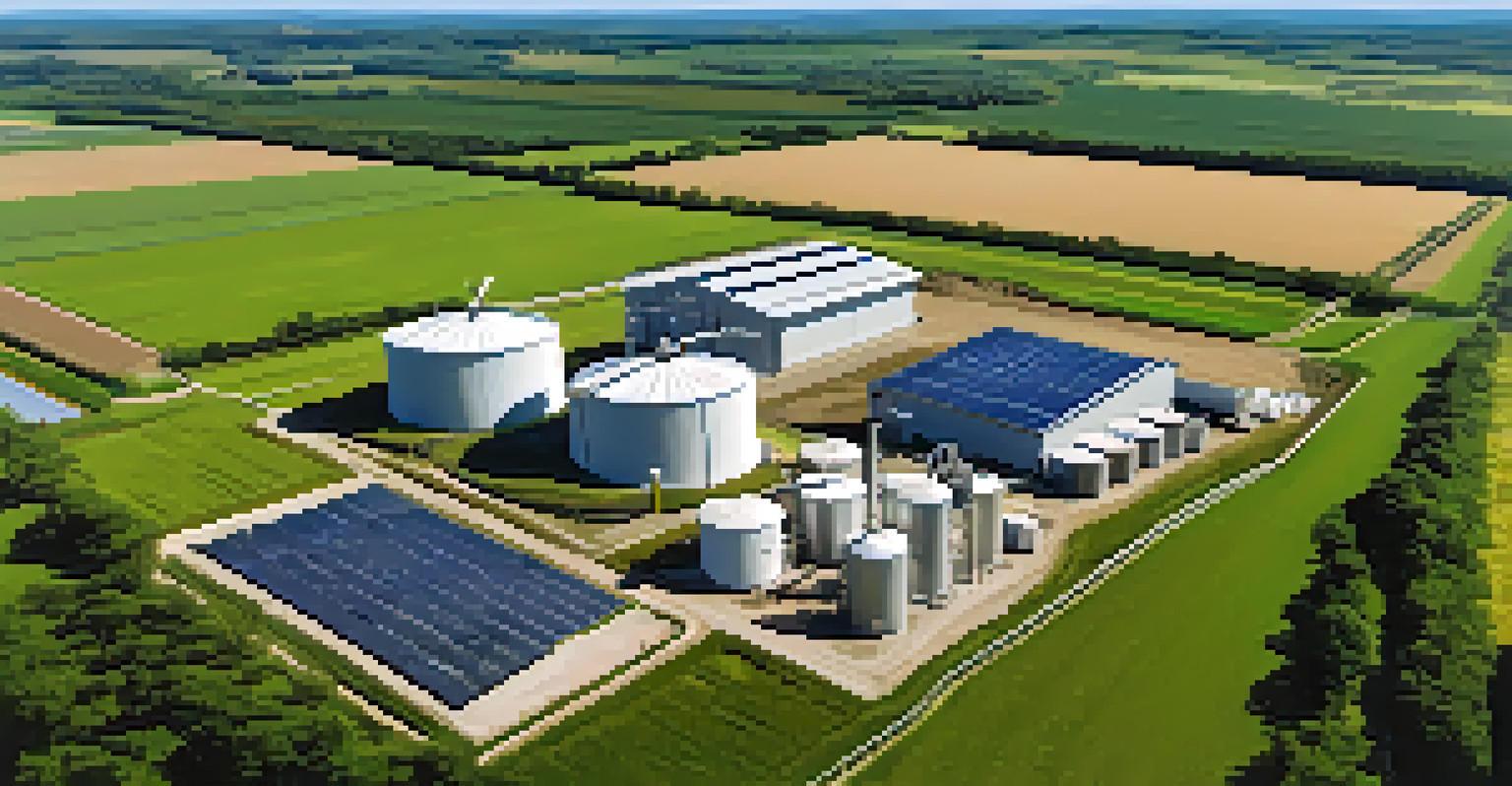Exploring Plant Waste as a Resource for Bioenergy

Understanding Plant Waste and Its Potential
Plant waste refers to the leftover materials from agricultural activities, such as crop residues, leaves, and stems. These materials are often considered byproducts, left to decompose or, worse, discarded. However, this waste is a treasure trove of potential energy waiting to be unlocked. Understanding the composition and volume of plant waste is crucial in realizing its role as a resource for bioenergy.
Waste is a resource in the wrong place.
Many farmers and agricultural businesses may not realize that what they see as waste can actually be converted into energy. For example, a single corn farm can produce tons of stalks and husks after harvest, which can then be transformed into biofuels. This not only reduces waste but also provides a sustainable source of energy, contributing to a circular economy.
By exploring the potential of plant waste, we can shift our perspective on agricultural practices. Instead of seeing waste as a burden, we can recognize it as an opportunity for innovation and sustainability. This mindset change is the first step towards harnessing the power of bioenergy.
The Science Behind Bioenergy from Plant Waste
Bioenergy derived from plant waste primarily involves processes like anaerobic digestion, gasification, and fermentation. Each method converts organic material into usable energy, typically in the form of biogas or biofuels. For instance, anaerobic digestion involves breaking down organic matter in the absence of oxygen, producing methane, a potent energy source.

Gasification, on the other hand, converts biomass into syngas through high-temperature treatment. This process is particularly effective for woody biomass, which includes branches and tree trunks. The syngas can then be used to generate electricity or further processed into liquid fuels.
Plant Waste is a Renewable Resource
Plant waste, often discarded, can be transformed into bioenergy, turning what is seen as waste into a valuable resource.
Fermentation is another method, where sugars from plant materials are converted into ethanol. This is commonly seen in the production of bioethanol from crops like sugarcane and corn. Understanding these processes helps clarify how plant waste can be transformed into viable energy solutions, showcasing the versatility of bioenergy.
Environmental Benefits of Utilizing Plant Waste
One of the most significant environmental benefits of using plant waste for bioenergy is the reduction of greenhouse gas emissions. When plant materials decompose in landfills, they release methane, a potent greenhouse gas. By converting this waste into energy, we can minimize these emissions and contribute to a healthier planet.
The greatest threat to our planet is the belief that someone else will save it.
Additionally, utilizing plant waste helps reduce the reliance on fossil fuels, which are major contributors to climate change. By shifting to renewable energy sources like bioenergy, we can foster a more sustainable energy landscape. This transition not only benefits the environment but also supports energy independence.
Moreover, the use of plant waste can lead to better soil health when the byproducts of energy conversion are returned to the land. This creates a win-win situation, where we generate energy while simultaneously enriching the soil, promoting sustainable agricultural practices.
Economic Opportunities in Bioenergy Production
The bioenergy sector offers a wealth of economic opportunities, particularly for farmers and rural communities. By turning plant waste into energy, farmers can create an additional revenue stream, helping to stabilize their income. This economic incentive can be a game changer in promoting sustainable practices in agriculture.
Local economies can also benefit from the development of bioenergy facilities, which create jobs in the construction and operation of these plants. This can lead to enhanced community resilience, as local residents become actively engaged in the energy production process.
Bioenergy Benefits the Environment
Utilizing plant waste for bioenergy reduces greenhouse gas emissions and reliance on fossil fuels, supporting a healthier planet.
Furthermore, as the demand for renewable energy sources grows, investments in bioenergy from plant waste can lead to innovation and technological advancements. This creates a ripple effect, encouraging further research and development in sustainable energy solutions.
Challenges in Implementing Bioenergy Solutions
Despite the numerous benefits, there are challenges to harnessing plant waste for bioenergy. One of the primary hurdles is the initial investment required for technology and infrastructure. Many small-scale farmers may find it difficult to afford the necessary equipment to convert waste into energy.
Additionally, the logistics of collecting and transporting plant waste can be complex. Farmers often operate in isolated areas, making it challenging to establish efficient supply chains. Addressing these logistical issues is essential for maximizing the potential of plant waste as a bioenergy resource.
Finally, regulatory challenges can also impede progress. Policies and incentives for renewable energy can vary significantly between regions, creating uncertainty for those looking to invest in bioenergy. A cohesive approach to regulation will be vital in overcoming these obstacles.
Innovative Technologies in Bioenergy Conversion
Recent advancements in technology are making it easier to convert plant waste into bioenergy. For instance, researchers are developing more efficient enzymes that can break down tough plant fibers, making it easier to extract sugars for fermentation. This innovation can significantly enhance the yield of biofuels from plant waste.
Another exciting development is the use of microbial fuel cells, which harness the power of microorganisms to convert organic matter directly into electricity. This technology has the potential to revolutionize the way we think about waste management and energy production, providing a sustainable and efficient solution.
Economic Gains from Bioenergy
The bioenergy sector creates economic opportunities for farmers and rural communities by providing additional revenue streams and job creation.
Moreover, integrated biorefinery systems are emerging, which combine various processes to maximize energy extraction from plant waste. These systems can produce multiple biofuels and bioproducts, making them more economically viable and environmentally friendly.
The Future of Bioenergy from Plant Waste
The future of bioenergy from plant waste looks promising, with increasing awareness of sustainability and renewable energy. As governments and organizations worldwide prioritize reducing carbon emissions, the demand for bioenergy is expected to rise. This shift will likely inspire more research and investment in bioenergy technologies.
Additionally, as the agricultural sector continues to innovate, we can expect to see more efficient ways to utilize plant waste. From new processing techniques to enhanced crop varieties, the future holds exciting possibilities for maximizing the potential of plant materials.

Ultimately, embracing plant waste as a resource for bioenergy not only addresses energy needs but also contributes to sustainable agricultural practices. By fostering a culture of innovation and sustainability, we can pave the way for a greener, more resilient future.